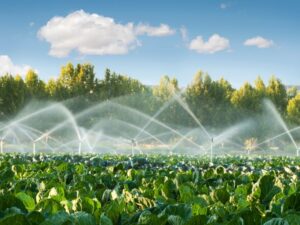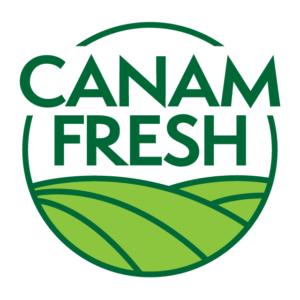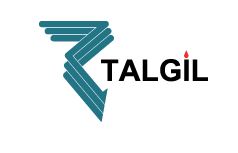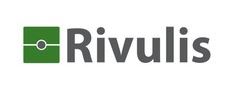Drip irrigation vs sprinkler systems is a crucial decision for farmers aiming to optimize water usage and ensure sustainable crop production.
Efficient watering systems are the lifeblood of any successful farm. With agriculture consuming about 70% of global freshwater resources, choosing between Drip Irrigation vs Sprinkler Systems is vital not only for crop health but for environmental conservation too.
For farmers, the decision often boils down to two primary systems: drip irrigation and sprinkler systems. Each has its merits and drawbacks, but how do you decide which is best for your farm? This blog post will help you make an informed decision by comparing these two systems in terms of water usage, cost, efficiency, and sustainability.
Understanding Drip Irrigation
Drip irrigation, sometimes referred to as trickle irrigation, involves delivering water directly to the plant’s root zone through a series of tubes, pipes, and emitters. The water is released slowly, minimizing evaporation and runoff.
The technology behind drip irrigation has evolved significantly, making it a popular choice for both small and large farms. It is particularly effective in arid and semi-arid regions where water conservation is crucial.
One of the standout features of drip irrigation is its precision. By delivering water directly to the plants, it ensures that every drop counts, making it one of the most efficient watering systems available.

Understanding Sprinkler Systems
Sprinkler systems mimic natural rainfall by spraying water over the crops through overhead pipes, nozzles, and rotating units. This method is versatile and can cover large areas, making it suitable for various crop types and farm sizes.
Sprinkler systems have been a staple in agriculture for decades. They are easy to install and can be adapted to different terrains and landscapes.
One of the key advantages of sprinkler systems is their ability to distribute water evenly. This helps in maintaining uniform soil moisture levels, which is essential for the optimal growth of most crops.
Water Usage Comparison: Drip Irrigation vs Sprinkler Systems.
When it comes to water usage between Drip Irrigation vs Sprinkler Systems, drip irrigation is the clear winner. Studies show that drip irrigation can save up to 50% more water compared to traditional sprinkler systems.
Sprinkler systems, on the other hand, are less efficient in water usage due to evaporation and wind drift. This can result in significant water loss, especially in hot and windy conditions.
For farms located in water-scarce regions, drip irrigation offers a more sustainable solution, ensuring that water is used judiciously and effectively.
Cost Considerations
Initial setup costs for drip irrigation can be higher due to the need for specialized equipment and installation services. However, when comparing Drip Irrigation vs Sprinkler Systems, the long-term savings in water bills and increased crop yields often offset these initial expenses.
Sprinkler systems are generally more affordable to install but may incur higher operational costs over time due to water inefficiency and maintenance requirements.
When evaluating costs, it’s essential to consider both the initial investment and long-term operational expenses. This will provide a more comprehensive understanding of the true cost of each system.
Efficiency Matters
Drip irrigation excels in efficiency by delivering water directly to the root zone, reducing evaporation and runoff. This targeted approach ensures that plants receive the exact amount of water they need, promoting healthy growth and reducing wastage.
Sprinkler systems, although less efficient in water usage, can cover larger areas more quickly. This makes them suitable for extensive fields where installing a drip system might be impractical.
Efficiency should be measured not just in terms of water usage but also in terms of crop yield and overall farm productivity. Both systems have their strengths, and the choice depends on the specific needs of your farm.
Sustainability and Environmental Impact
Drip irrigation is often touted as the more environmentally friendly option due to its water-saving capabilities. It also reduces soil erosion and nutrient runoff, contributing to healthier ecosystems.
Sprinkler systems, while versatile, can lead to soil erosion and nutrient leaching if not managed properly. They also consume more energy, contributing to a larger carbon footprint.
For farmers committed to sustainable practices, drip irrigation offers a more eco-friendly solution, aligning with broader environmental goals.
Farm Size and Crop Type Considerations
Drip irrigation is ideal for smaller farms or those with high-value crops like fruits and vegetables. It allows for precise water control, which is crucial for delicate plants.
Sprinkler systems are better suited for larger farms growing staple crops like wheat, corn, and soybeans. They can cover extensive areas more efficiently, making them a practical choice for large-scale operations.
Understanding the specific needs of your farm, including the types of crops grown and the available resources, is key to selecting the most suitable irrigation system.
Choosing between drip irrigation and sprinkler systems ultimately depends on various factors, including water availability, farm size, crop type, and budget. For additional insights on irrigation methods, consider reading our blog post on Custom Irrigation Solutions for Small-Scale Farmers: A Comprehensive Guide.
Both systems have their unique advantages and limitations, but the overarching goal is the same—to achieve efficient and sustainable crop production.
Conclusion
In conclusion, choosing between drip irrigation and sprinkler systems is a crucial decision that can significantly impact your farm’s efficiency and sustainability. By understanding the benefits and limitations of each system, you can make an informed choice that aligns with your agricultural goals.
If you’re looking for personalized irrigation solutions tailored to your specific needs, our team is here to help you every step of the way. We offer comprehensive services designed to optimize water usage and enhance crop production.
For those interested in diving deeper into the differences between these two systems, we recommend checking out this insightful article from Grounds Guys. It provides a thorough comparison that can further inform your decision-making process.


























